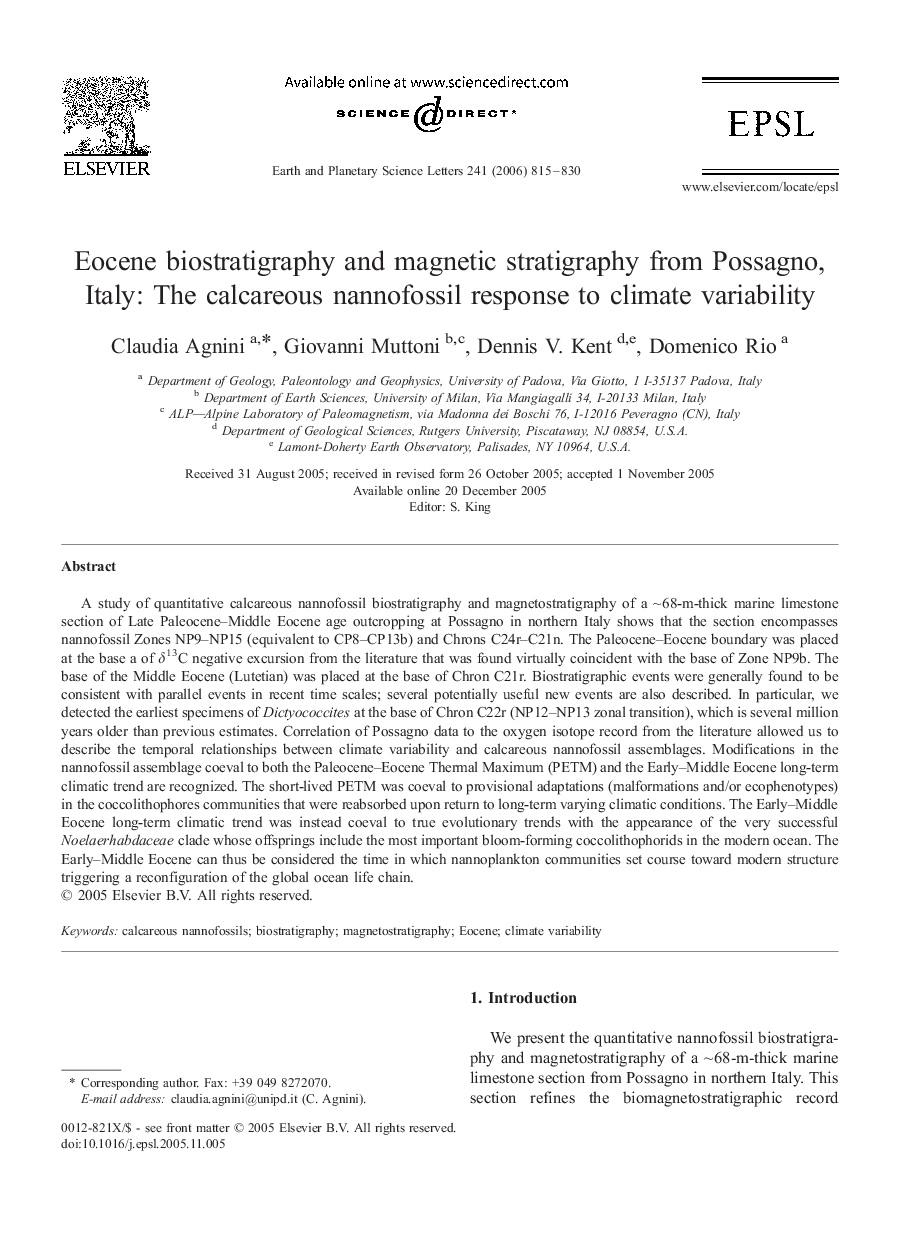| کد مقاله | کد نشریه | سال انتشار | مقاله انگلیسی | نسخه تمام متن |
|---|---|---|---|---|
| 4681221 | 1634952 | 2006 | 16 صفحه PDF | دانلود رایگان |

A study of quantitative calcareous nannofossil biostratigraphy and magnetostratigraphy of a ∼ 68-m-thick marine limestone section of Late Paleocene–Middle Eocene age outcropping at Possagno in northern Italy shows that the section encompasses nannofossil Zones NP9–NP15 (equivalent to CP8–CP13b) and Chrons C24r–C21n. The Paleocene–Eocene boundary was placed at the base a of δ13C negative excursion from the literature that was found virtually coincident with the base of Zone NP9b. The base of the Middle Eocene (Lutetian) was placed at the base of Chron C21r. Biostratigraphic events were generally found to be consistent with parallel events in recent time scales; several potentially useful new events are also described. In particular, we detected the earliest specimens of Dictyococcites at the base of Chron C22r (NP12–NP13 zonal transition), which is several million years older than previous estimates. Correlation of Possagno data to the oxygen isotope record from the literature allowed us to describe the temporal relationships between climate variability and calcareous nannofossil assemblages. Modifications in the nannofossil assemblage coeval to both the Paleocene–Eocene Thermal Maximum (PETM) and the Early–Middle Eocene long-term climatic trend are recognized. The short-lived PETM was coeval to provisional adaptations (malformations and/or ecophenotypes) in the coccolithophores communities that were reabsorbed upon return to long-term varying climatic conditions. The Early–Middle Eocene long-term climatic trend was instead coeval to true evolutionary trends with the appearance of the very successful Noelaerhabdaceae clade whose offsprings include the most important bloom-forming coccolithophorids in the modern ocean. The Early–Middle Eocene can thus be considered the time in which nannoplankton communities set course toward modern structure triggering a reconfiguration of the global ocean life chain.
Journal: Earth and Planetary Science Letters - Volume 241, Issues 3–4, 31 January 2006, Pages 815–830